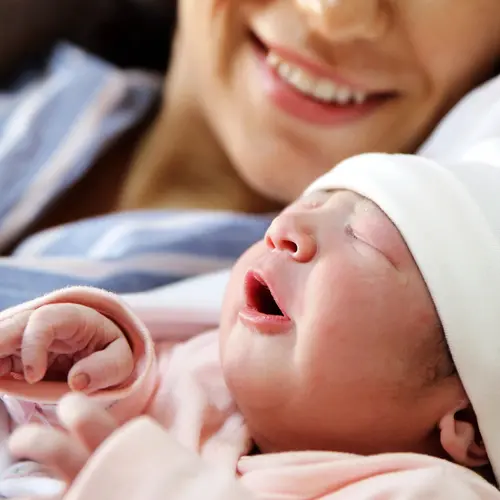Pregnancy fads come and go. Some people let professional photographers in the delivery room to record the birth. Other moms eat their baby’s placenta.
Add this trend to the list: vaginal seeding. It’s when newborns delivered by C-section are swabbed with their mother’s vaginal fluid soon after birth. The practice is controversial, and some researchers believe it may even be dangerous. Here’s what you need to know.
Why It’s Done
For vaginal seeding, your doctor places gauze swabs in your vagina during your C-section. As soon as your baby comes out, they’ll get rubbed with the swabs all over their face and body, including their eyes and mouth. The goal is to give your baby all the same bacteria that they would pass through during a vaginal birth.
Babies born by C-section are slightly more likely to have allergies, asthma, and other diseases. One possibility is that babies who don’t get exposed to the “good” bacteria that line the mother’s vagina miss out on a stronger immune system. Research suggests that C-section infants may have fewer kinds of gut bacteria, known as the microbiome, than babies who arrive through the birth canal.
Evidence
So far, only one study has backed up the benefits of seeding. When researchers swabbed four babies born by scheduled C-section with gauze that had been exposed to mom’s vaginal fluids for about an hour, they found that a month later the bacteria on their skin and in their mouth were similar to those of babies born vaginally. That wasn’t the case with the 11 C-section babies who hadn’t been swabbed.
But the study was too small to say if the practice is safe or effective. More recent research has found that the differences in bacteria among C-section and vaginally born babies disappear by the time they’re 6 weeks old. That suggests that an infant’s body will make the natural adjustments it needs no matter how they came into the world.
Concerns
A 2016 editorial published in the journal BMJ warned that the benefits of vaginal seeding lacked proof and that it might cause serious harm.
The American College of Obstetricians and Gynecologists (ACOG) also opposes it. The main reason is that your baby could develop a potentially life-threatening infection. If you have a vaginal infection such as group B streptococcus (20% of pregnant women have it), herpes, chlamydia, or gonorrhea, you could pass it to your baby. This could lead to eye infections or neonatal sepsis, a serious blood infection that could kill your baby. Even though this is very unlikely to happen, the benefits probably don’t outweigh it.
Women who have a known vaginal infection and who plan to deliver vaginally, on the other hand, would be treated with antibiotics before they have the baby.
Bottom Line
For now, ACOG recommends vaginal seeding only if you’re part of a clinical trial, where you’ll be well supervised. You can help boost your baby’s microbiome several other ways. These include:
- Breastfeeding. About 30% of the beneficial bacteria in your baby’s tummy come from breast milk.
- Skin-to-skin contact with your baby right after birth. About 10% of your baby’s good bacteria come from the skin around your breasts.
- Delaying your baby’s first bath for 12 hours.
- Avoiding unnecessary antibiotics.
Of these, breastfeeding is probably the most effective.

